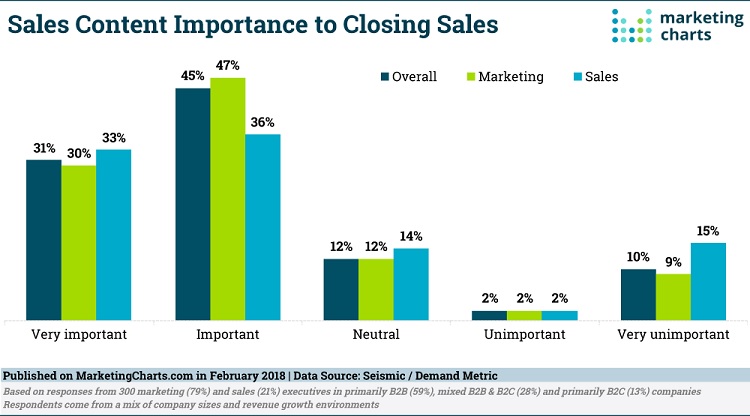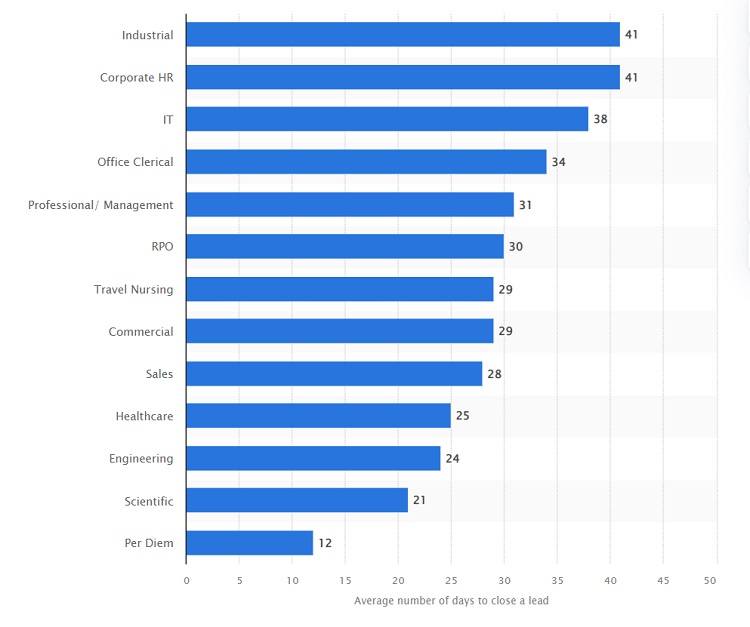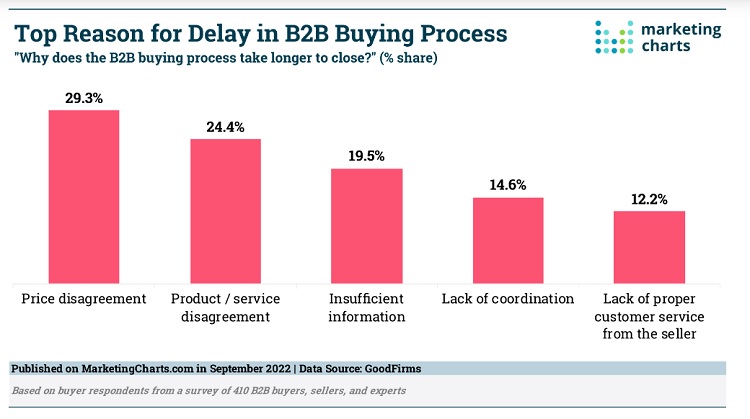What is the magic formula that allows one salesperson to close a deal over another? Some companies seem to have high conversion rates. The truth is that you can do everything right but if you don’t know how to hit all the points in the buyer’s journey and close the sale, you can lose potential customers before they commit to you.
How Do You Close a Sale?

How do you approach sales? Knowing where the buyer is on the journey and what to say at the right time makes all the difference. Your content must match where the user is if you hope to turn them into raving fans.
Around 76% of sales professionals believe content is crucial to closing deals. Think about what the reader needs to move to the next phase of the sales funnel. As you craft content around user needs, think about sharing only the most pertinent information.
Here are some tips to help you better land deals and improve your conversion rate.
1. Ask the Right Questions
What questions you ask and answer can have an impact on whether the person buys from your brand. Think about the main objections that leads raise when sales talks to them. If you can provide an answer to the concern before it’s even brought up, you’ve reduced the time it takes the buyer to move through the sales funnel from awareness to decision stage.
You can also ask them why they aren’t ready to buy with questions such as:
- What other questions can I answer for you?
- Is something holding you back from making this decision today?
- What needs to happen for us to close this deal?
Knowing when to ask the question might be as important as which question you ask. If all information has been exhausted, it’s time to move the person forward on the journey to becoming a customer. Practice and trial and error are the only ways to learn how to ask the right questions and overcome user objections.
2. Keep People Engaged
No matter how you present the information to the buyer, you must keep them engaged from the minute they begin to interact with the brand until they’re ready to convert into a customer.
Even the design of your presentation has an impact on the customer’s engagement level. Your audience is more likely to remember your presentations when they hit on the key points and create an emotional connection.
Put yourself in the customer’s shoes. What would you need to stay interested? People in different parts of the buyer’s journey may need more in-depth information than others.
3. Usher Them Along

Know how long it takes on average to close a sale. For example, if you’re in healthcare, expect 25 days. If in sales, plan for 28 days. The faster you get at moving people along, the more likely you’ll close the deal. You don’t want to give them too much time to research alternatives or talk to a competitor who is more adept at finalizing the sale.
Say things such as, “Let’s go ahead and move to our packages and see what works for you.” Think about how to usher the user along without seeming overly pushy. You can also say things such as, “If you don’t have any other questions, let me show you which plan I think works best for your needs.”
Gently move your customers to the next phase of the buyer’s journey so you can close the sale.
4. Talk to the Right Person
If you aren’t talking to the decision maker from the beginning, you risk wasting a lot of time presenting material only to have to repeat it all again when they take the idea to their superior.
It isn’t always possible to go straight to the top, but whenever you can it saves time and effort. You’ll also have more insight into what the company needs when you chat with the leaders as they’ll have a unique perspective that accounts for the needs of the brand as a whole rather than a single department or role in the company.
5. Improve Customer Service
Around 90% of people cite customer service as the reason they are loyal to one brand over another. When you gain a reputation for creating an excellent customer experience, leads are much more likely to follow through on buying from your company.
You can also use a positive customer service record as a selling point when trying to convince a lead to close the deal.
6. Review Prices

Source: https://www.marketingcharts.com/industries/business-to-business-227461
Are your prices fair? In a survey of B2B buyers, sellers and other experts, researchers found 29.3% cited a price disagreement as the reason for not closing the deal. If you’re asking the right questions, you can identify when pricing is a concern and come up with various packages or discounts to bring a new customer onboard.
7. Share the Solution
People seek out a solution to their problems and not so much a product. When you understand your customers’ pain points, it’s much easier to explain how you can fix the issue. Tap into their emotions and you’ll find it much easier to close the deal.
8. Create Urgency
Sometimes your clients will need a little extra push to go ahead and make the decision. One way you can close the sale is by creating a sense of urgency. Offer a discount but only until a certain date and time.
One crucial part of creating urgency is not continuing to offer the same discount after the deadline passes. If you just send the same deal again and again, you won’t seem very truthful or trustworthy.
While it’s tempting to still offer the discount just to gain new business, it doesn’t do anything for building trust. Of course, if a customer reaches out and says they are now ready to buy, you can offer them a different special, depending upon promotions currently in play.
Landing the Deal Requires Balance
When it comes to closing the deal with a potential client, you have to figure out how to balance a lot of different factors. You must show why the product or service is the solution to their pain point.
While it’s important to create a sense of urgency, you also want to balance that with not putting too much pressure on the person. You want the customer to feel satisfied with their decision to buy from you and not regretful.
Try different tactics and track what works. Over time, you’ll land more deals and be able to train newer sales staff in best practices.
About the Author: Eleanor Hecks is editor-in-chief at Designerly Magazine. She was the creative director at a digital marketing agency before becoming a full-time freelance designer. Eleanor lives in Philadelphia with her husband and pup, Bear.
